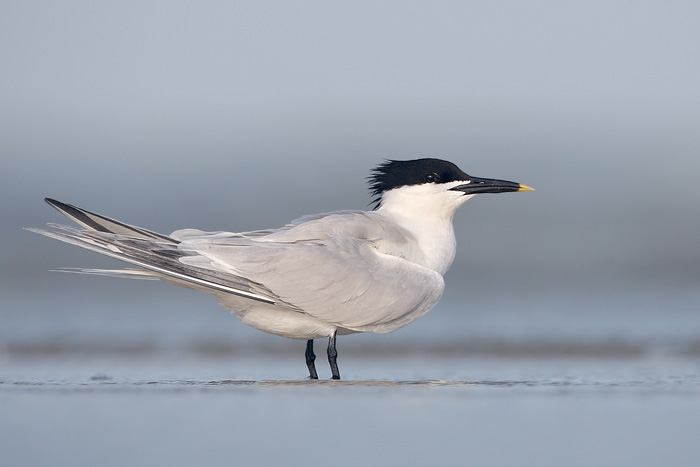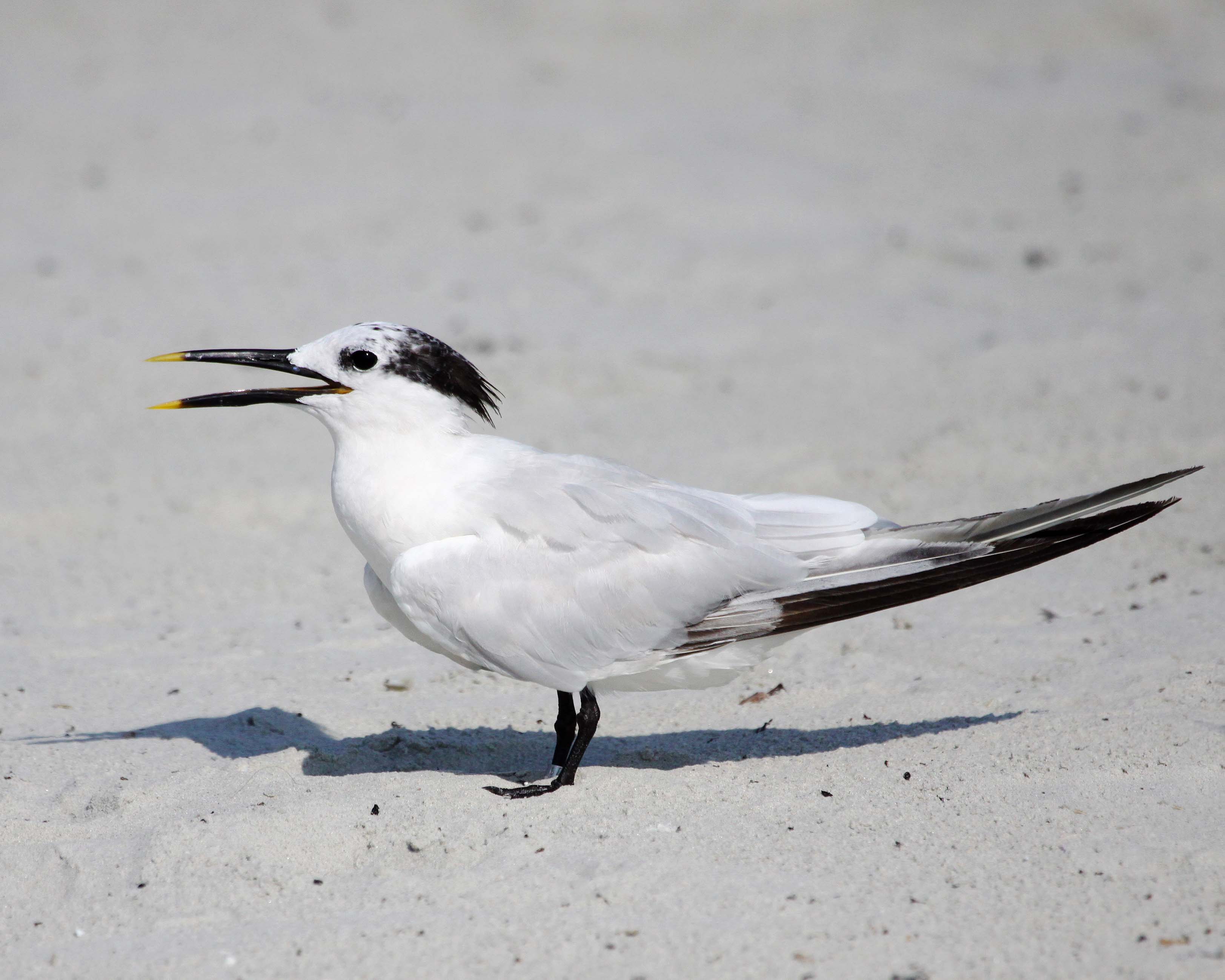Sandwich Tern
Sandwich Tern (Sterna sandvicensis )
The Sandwich Tern (Sterna sandvicensis, Syn: Thalasseus sandvicensis ) is a seabird of the tern family ( Sternidae ).
Description
The Sandwich Tern is about 40 cm long and reaches a wingspan of about 100 to 110 cm. Its long beak is black and has a light yellow tip. The top of the wing is colored light gray. The bottom and the neck are colored white. The head plate and the disheveled mop of the neck are black. Males and females have the same coloring. Your short tail is forked. The croaking call of the sandwich tern sounds something like " kärrik ". Terns can be up to 23 years old.
Habitat
The tern living along the European coasts of the North Sea, Baltic Sea, the Atlantic, Mediterranean, Black Sea and Caspian Sea. In Central Europe, the sandwich tern of March remains to September. In winter, they moved to southern Europe to South Africa. The Sandwich Tern inhabits coastal and small islands with shallow water and plenty of food. The two most important breeding colonies of the sandwich tern in the German Bight are located on the uninhabited island holm Norderoog and Trischen, both before the Schleswig-Holstein North Sea coast.
Nutrition
The Sandwich Tern is a more accurate impact divers. You captured mainly small fish on the coast or on the open sea. Likewise, it feeds on mollusks, worms and insects.
Reproduction
Sexual maturity occurs after three to four years. The Sandwich Tern broods from May to July in tight, huge colonies. Legal undisturbed small islands are preferred as breeding area. A breeding colony can consist of 1000 to 9000 pairs, have to share a square with little space to ten breeding pairs. The birds can defend themselves effectively in the crowd shouting, flies and Kotablassen against enemies. The nesting site, a maximum of 20 cm wide trough, located in dunes or sand banks. Both parents warm one to three eggs for about 24 days. After two days the young leave the nest and explore together the environment. After four to five weeks, the young birds are fledged, but still continue to be supplied by the parents. Storm surges and people are the most common reasons for high losses.

)








